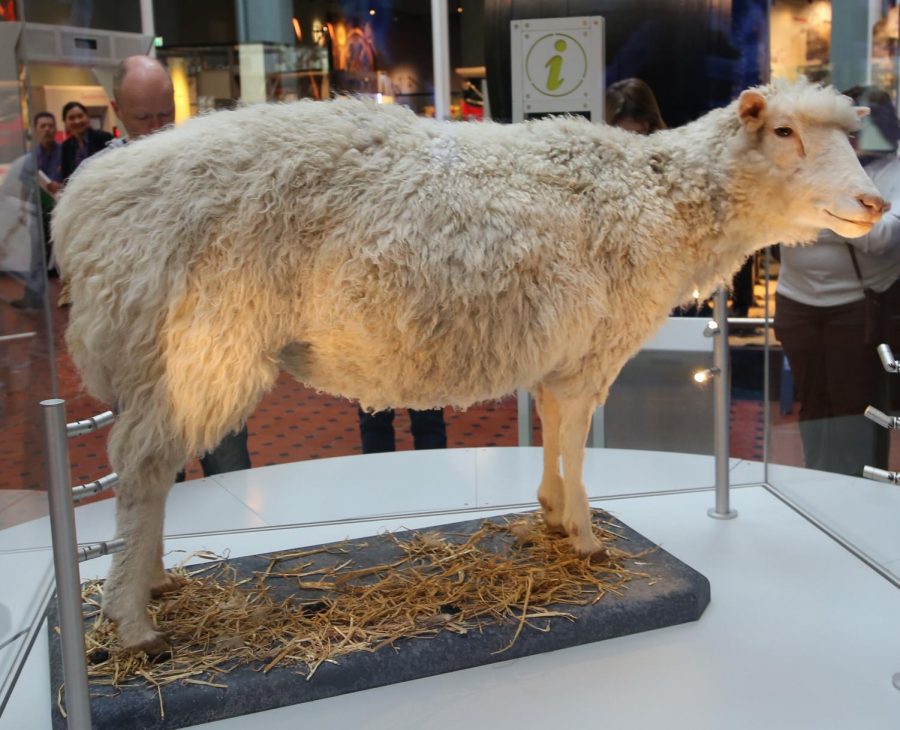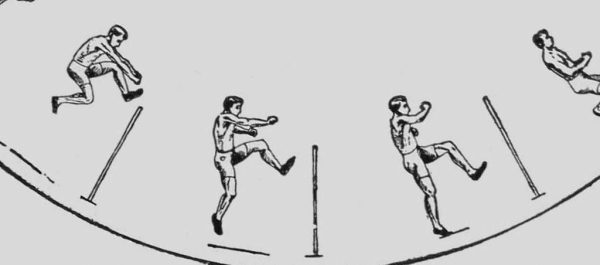Cloning the Future
Standing upright at the National Museum of Scotland, Dolly the sheep was the first mammal cloned using an adult somatic cell. The twin monkeys were born in January were also replicated through reproductive cloning.
March 15, 2018
On January 25, a baby monkey entered into the world. While the monkey acted and looked like other kinds of its species, it was unique. This monkey was the first primate to be cloned, and ten days later, its twin became the second primate to be copied from the same DNA as the first monkey. While there have been other animals that were replicated, like Dolly the sheep, the cloning of primates is especially exciting because monkeys are one of the genetically closest mammals to humans.
The normal mammal uses half of one of the parent’s genes and half from the other parent’s. The only natural cloning that occurs is identical twins. Identical twins are born with the exact same genes as their sibling. These replicated monkey twins were duplicated in the same manner as Dolly the sheep which is reproductive cloning. This occurs when scientists remove an adult somatic cell, a cell that is not reproductive. They transfer the DNA of that cell into an egg cell that has already had its nucleus removed. The donor’s DNA can be added by to the egg cell’s nucleus in several different ways, but, all allow the egg cell to develop into a young embryo in a test-tube, which is then inserted into the womb of a female.
One of the reasons that the Chinese scientists cloned these twin monkeys was to figure out the genetic factors behind Alzheimer’s disease. Due to the fact that these two monkeys are genetically identical, the scientists are able to turn off several genes in one monkey that they believe play a part in Alzheimer’s. This permits the scientists to find if certain genes affect Alzheimer’s by studying the monkey without those specific genes and the other who still utilizes the genes. Cloning can also be used to ensure that several special traits get passed down to the offspring. For instance, cloning an award winning horse means that the clone will have the same traits as the donor, not like regular reproduction where they only receive half of the parent’s DNA. Another use of cloning is the cloning of animals, as Barbra Streisand did. Streisand recently revealed that she cloned her deceased dog twice, and even though the dogs are genetically identical, they are different in terms of personality. As of now, ViaGen, “America’s Most Trusted Animal Cloning Company,” charges $50,000 to clone a dog and $25,000 for cloning a cat.
Although these show great strides in the scientific field and seems to foreshadow that human cloning is not so far off in the future, we are still a long ways away. The cloning of animals is one thing, but the cloning of humans is entirely different and brings up many ethical dilemmas. In fact, the UN called for their states to prohibit human cloning. Senior Victoria Pina said, ”I do believe that human cloning will eventually be possible in the future. However, in my opinion, it does pose some controversy when it comes to ethics on how far scientists are willing to go to achieve it”. Therefore, even though this astounding event potentially brings us closer to the cloning of humans, this event does not necessarily mean that humans will begin to be cloned in the future.












